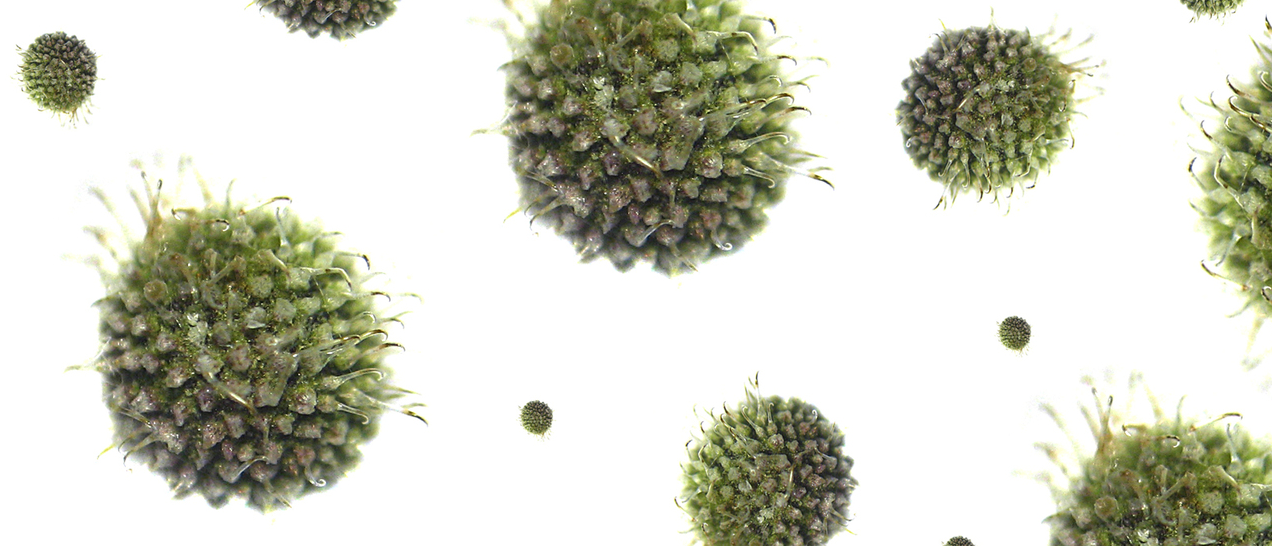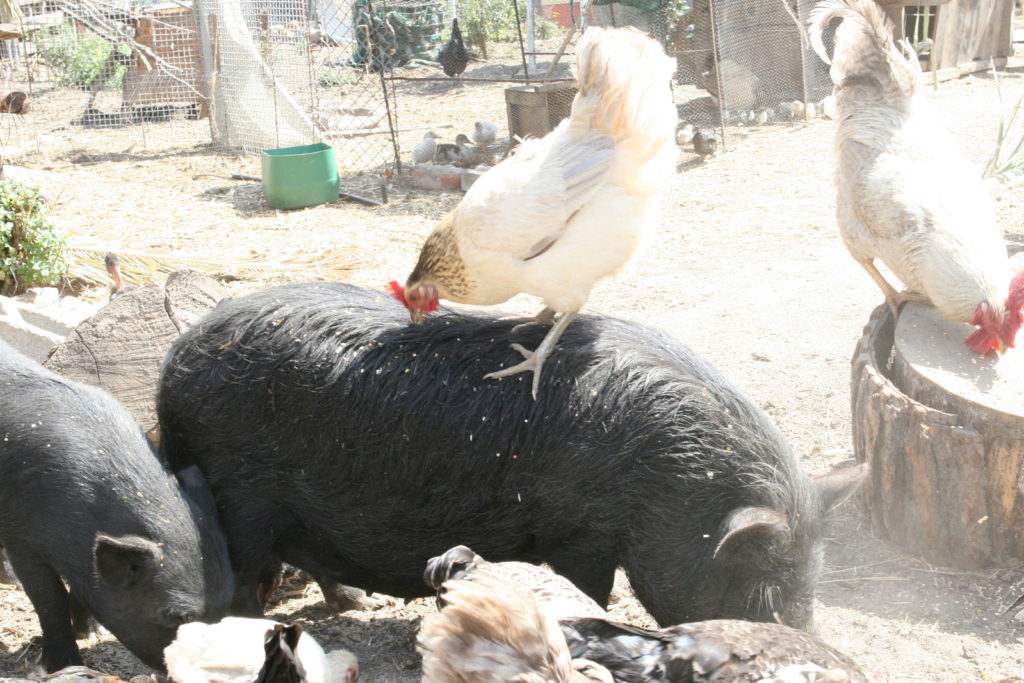
It is that time of year when children go back to school, many are still vaccinated and shed viruses to share with everyone, and many people get sick. I thought it might be helpful to have more information on our common flu and new ideas on how to handle it.
Influenza Information

A little cough and a runny nose—just the flu, right? “Just the flu” has spread around the globe to pandemic proportions killing millions many times throughout our history and at least ten times during the last three centuries. So that begs the question: just what is the flu? The flu is a shortened name for the influenza virus, also called “la grippe” in French. Influenza is strictly a respiratory disease that rarely produces a few gastrointestinal symptoms in addition to the respiratory symptoms. There is no “stomach flu” or “24-hour flu” as these are just colloquial sayings using flu to mean any illness. Symptoms of the flu are fever, headache, sore and achy muscles, sneezing, cough, runny nose (or stopped up), and watery eyes; rarely symptoms may include nausea, vomiting, and diarrhea. Further, the flu has an incubation period and an acute (or active) stage. Generally, the incubation stage lasts about two days (but this can be as short as 24 hours for sudden onset and as long as four days for gradual onset). After the incubation stage, the disease moves into the active stage which typically lasts 3-5 days, though the fever may present for 1-6 days. The most common symptoms during the active stage are fever/chills (often ranging from 101-104 degrees F), muscle aches, dry cough, sore throat with hoarseness, headache, loss of appetite, chest pain/discomfort, and nasal congestion or runny nasal discharge. As if all these symptoms weren’t enough, the flu can bring about several complications including pneumonia, shaking chills and profuse sweats, high fever with delirium, twitching convulsions, fine moist rales, pulmonary edema, rapid/painful respiration, dyspnea, hypoxia, coughing paroxysms, hemorrhaging, blood-tinged sputum, epistaxis, herpes eruption, cyanosis, bilateral ptosis, abdominal distension, and leukocytosis. To further complicate matters, the flu can also lead to Reye’s Syndrome (especially when Aspirin is given), Guillain-Barré Syndrome, myositis, encephalitis lethargica, croup, and myocarditis. It is no wonder the flu can turn deadly fairly easily.

So what is a virus and how does it infect the body? A virus consists of a nucleic acid molecule surrounded by a protein coating. Viruses can only multiply when in living host cells they have hijacked. Interestingly, virus is Latin for poison or slimy liquid. Viruses are so small they can only be seen via light microscopy and were first discovered in 1892. In shape, viruses are varied ranging from polyhedral as seen in adenovirus, helical as in tobacco mosaic virus, complex as in bacteriophages, and spherical. The influenza virus is spherical. On the outside of the sphere are protrusions; some are pointed and some are rounded. The rounded protrusions are called neuraminidase (or sialidase) while the pointed protrusions are called hemagglutinin. Inside the coating (or capsid) is a nucleoprotein consisting of coiled RNA. Every virus, like anything else being “used” by our cells, must attach to cell receptor sites. The hemagglutinin, or spikes, bind the virus to the cell’s sialic acid cell receptor. Through the process of endocytosis (entering the cell), virus particles are endocytosed to enter early endosomes. Using polymerase, a viral enzyme, the influenza virus takes control of the cell’s own machinery allowing it to be transported past the cytoskeleton. Once inside, the flu begins to replicate itself. It is worth noting that influenza is different from other viruses in that the RNA is in eight separate pieces and each piece is a single genetic unit (gene). This special characteristic is why influenza can rapidly mutate allowing for greater infectious capability.
Viruses are differentiated by the configuration of their different spikes—N is for neuraminidase and H is for hemagglutinin; there are 12 H subtypes and 19 N subtypes. This is why we see things like H1N1 for flu names. Additionally, major virus strains are further consigned to categories A, B, and C depending on their antigenic characteristics. Influenza A strains have been isolated from animals and humans (so far, B and C are only isolated from humans); moreover, A strains are the only ones, historically, to have led to pandemics.
While we can see how the flu can quickly turn into something serious, we still need to consider how it spreads over a region or the world, sometimes extremely rapidly. Most epidemics begin in the winter months. While people may spread the disease, the animals are moving around less during this time so animal transmission is lowered. However, pandemics usually appear outside of the winter months. They can often be correlated to animal migration patterns which sheds light on how pandemics could occur prior to the world being made a smaller place by air travel and cars. Influenza, in particular, is often carried by water fowl. In fact, these birds can carry all versions of the influenza A subtype. In aquatic birds (especially wild ducks), influenza viruses replicate in the cells lining the intestinal tract. When the duck defecates, it sheds the virus. This shed virus can be now transmitted to other animals coming into contact with the feces or feces-contaminated water. Swine are a very common intermediate host enabling influenza strains to cross from fowl to humans. It has been said that simply separating fowl from swine in agricultural practices could significantly stop the spread of influenza. Unfortunately, many Asian countries do not follow this practice, and as a result, many pandemics originate in Asian countries.

Is it just enough that species cohabitate? No, further changes must occur. Recall back to how there are 8 pieces of RNA in influenza—these separate genetic units give influenza the ability to quickly mutate. When this happens, antigenic drifts and shifts occur. An antigenic drift is when minor changes occur. These drifts usually contain H1, H2, or H3 and N1 or N2. These happen more frequently; however, sometimes the virus makes radical changes to the hemagglutinin and neuraminidase antigens which produces strains never before seen by the world (meaning humans have no immunity). These major mutations are called antigenic shifts. How do these antigenic shifts occur? Influenza viruses from two separate species must meet and exchange RNA. Now it becomes clearer why keeping swine and fowl together near humans may be a bad idea. When the viral exchange happens, the resulting mutated virus has the potential to create a pandemic. All pandemics result from antigenic shifts.
Antigenic shifts are also a significant concern in our era of vaccinations and xenotransplantation. Xenotransplantation is using animal tissues, fluids, and organs (often from swine) to replace missing human parts. While this is incredible and can be lifesaving, implanting an animal part into a human does not magically make it a human part with all human cells and DNA nor does it mystically negate the animal DNA in the transplanted tissue. Please do not misunderstand and think I am saying I believe xenotransplantation is something evil or that we should not do, I merely bring up the fact that we do not know enough to really call it ultimately safe for the transplantee nor the human race in general. We double (and even triple) down on adding animal DNA to our bodies with our massive use of vaccinations. Many vaccinations are cultured in human or animal tissues, several include bovine (cow) sera, human fetal cells (some from the 1960s), bacterium (notably mycoplasma), VERO sells (SV40), and various avian sources. These avian sources are perhaps the most horrifying when considering the influenza virus. To drive this frightening point home further, these avian sources are often used in influenza vaccinations. At some point, we have to ask: how human are humans anymore with these different DNA types being inserted into our bodies and genetic makeup? Can we potentially create antigenic shifts within our own bodies? There have been no long term studies on how either really affects our bodies over one lifetime, much less how it affects our children and their children. Yet, with all the rhetoric cheering these “advances,” we turn a blind eye to the potential dangers. And we haven’t even considered the genetically modified food flooding our markets, restaurants, and bodies—again, without any long term studies.

So what do we do? To begin with, we need to avoid vaccinations and GMO foods. Neither have life-giving or life-saving properties (though some would argue vaccines might, but that is your own decision to make: see To Vaccinate or Not to Vaccinate). I can see the potential value in xenotransplantation, though I am unsure how I feel about it in the long term. Beyond taking control back of your health, learning to make informed decisions about medical procedures and food, and making your body an environment dis-ease cannot take root in, we also need to look at other methods for reestablishing balance in the body. During the deadliest influenza outbreak in history, the Spanish Flu in 1918-1919, a study in Dayton, Ohio, by Dr. McCann found in 24,000 cases of flu treated by the medical community had a mortality rate of 28.2%. This is starkly contrasted by the 26,000 cases of the flu in the same study that were treated with homeopathic remedies with a mortality rate of only 1.05%. This was found to be true everywhere for homeopathy: very few homeopathic doctors lost patients to influenza or pneumonia during this time. Allopathic doctors (standard medical practitioners) had rates as high as 50% in adults age 20-50. Why the glaring contrast in success? Allopathic doctors during this time did not realize aspirin, which was widely prescribed during this time, had contraindications in use with viruses and also increased the nose bleeds common with this iteration of the flu. However, at a deeper level, allopaths treat all patients the same; there is no tailoring a program to meet the specific needs and presentation of symptoms in each person. Dr. Sandra J. Perko called the Spanish Influenza “the greatest failure of allopathic medical science in the twentieth century.” (The Homeopathic Treatment of Influenza, page 37) Homeopaths, on the other hand, take the time to ascertain the best single remedy for each client. By matching physical, mental, and emotional symptoms to a remedy, clients are treated with a remedy matching them and their unique symptoms. This allows the body to be strengthened in its ability to find homeostasis and, thus, health.
In the end, knowledge is always power. I know for myself, my family, and my clients, I will staunchly recommend and use natural methods to help our bodies stay strong. I also know it is best sometimes to let illnesses go untreated (though I do believe in supporting the body, just not suppressing symptoms) to allow the immune system to stretch its proverbial legs and get stronger. Further, I will continue to question the benefit of forcing the body to fight an illness it did not contract on its own by natural means. Most of all, I will continue to advocate for each person taking ownership and power over his or her own health. It is your body and your choice.
I hope this was informative. If you have any questions or wish to set up a consultation, please don’t hesitate! I’d love to help you find your own path to health.
